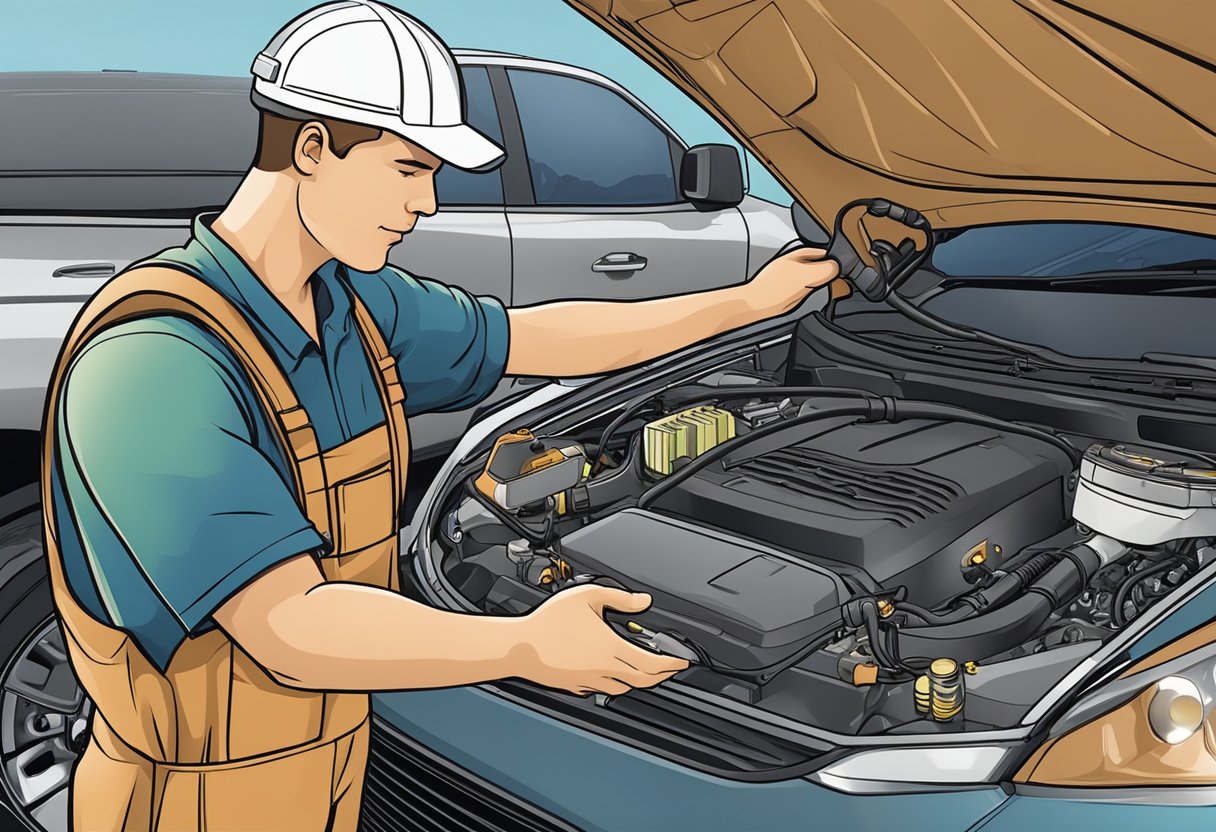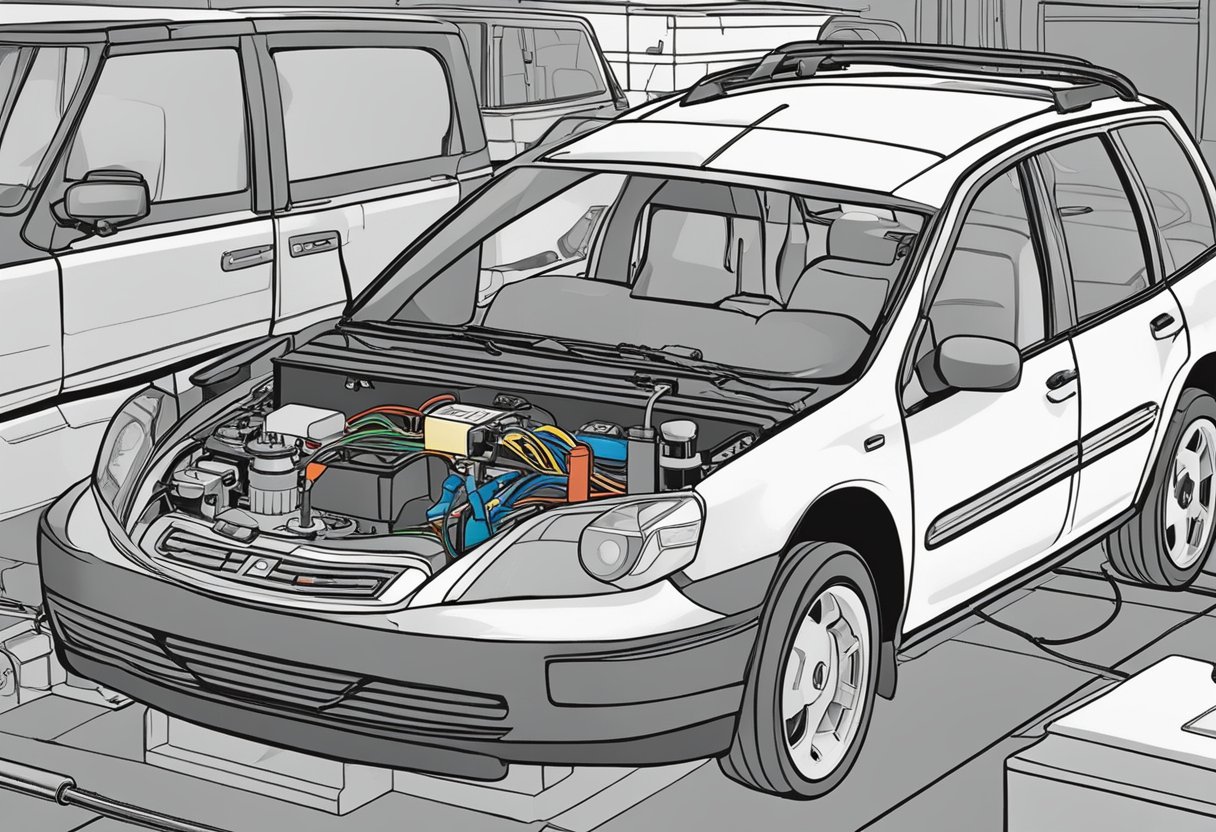If you’re experiencing issues with your vehicle’s MAP (Manifold Absolute Pressure) sensor, the first step is to understand the underlying problem. One of the most common issues is a low MAP sensor signal, which can trigger the P0107 diagnostic trouble code (DTC). This code indicates that the MAP sensor is producing a signal that falls below the expected range, which can cause a variety of drivability issues.
The MAP sensor plays a critical role in your vehicle’s performance, as it measures the amount of air entering the engine and adjusts fuel delivery accordingly. When the sensor produces a low signal, it can cause a range of problems, such as rough idling, poor acceleration, and even stalling. Understanding the underlying causes of low MAP sensor signals can help you diagnose and fix the issue quickly and effectively. In this article, we’ll explore the common causes of low MAP sensor signals and provide tips for troubleshooting and resolving the problem.
Understanding MAP Sensors
If you’re experiencing issues with low MAP sensor signals, it’s important to understand what a MAP sensor is and how it works. The MAP (Manifold Absolute Pressure) sensor measures the pressure inside the intake manifold of an engine. This information is then sent to the engine control module (ECM) to help determine the correct fuel-to-air ratio for optimal engine performance.
MAP sensors are typically found in fuel-injected engines and are crucial in maintaining proper engine performance. Without a functioning MAP sensor, the engine may experience a variety of issues, including poor fuel economy, rough idling, and decreased power.
MAP sensors work by using a diaphragm that reacts to changes in pressure. The diaphragm is connected to a resistor, which changes its resistance based on the pressure it senses. This change in resistance is then converted into an electrical signal and sent to the ECM.
It’s important to note that MAP sensors can fail over time due to wear and tear, or due to exposure to extreme temperatures or harsh chemicals. When a MAP sensor fails, it can cause a variety of issues, including the aforementioned poor fuel economy, rough idling, and decreased power.
In summary, the MAP sensor is a crucial component in maintaining proper engine performance. Understanding how it works and how to troubleshoot issues with low MAP sensor signals can help ensure your engine runs smoothly and efficiently.
Diagnosing Code P0107
If you have a check engine light on and your OBD-II scanner is displaying code P0107, it means that the MAP sensor is reporting a low voltage signal to the ECU. This code is commonly seen in vehicles with a MAP sensor, and it can be caused by a variety of issues, ranging from a faulty sensor to a vacuum leak in the intake manifold.
To diagnose code P0107, you will need to perform a few tests to determine the root cause of the issue. Here are some steps you can take to diagnose this code:
-
Check the MAP sensor wiring: The first thing you should do is check the wiring going to the MAP sensor. Look for any signs of damage, such as frayed wires or broken connectors. If you find any issues, repair or replace the wiring as necessary.
-
Check the MAP sensor vacuum hose: The MAP sensor relies on vacuum pressure to function properly. Check the vacuum hose going to the sensor for any leaks or damage. If you find any issues, replace the hose.
-
Check the MAP sensor voltage: Use a multimeter to check the voltage going to the MAP sensor. The voltage should be between 4.5 and 5 volts with the key on and the engine off. If the voltage is lower than this, it may indicate a faulty sensor.
-
Check for vacuum leaks: A vacuum leak can cause the MAP sensor to report a low voltage signal. Use a smoke machine or a can of carburetor cleaner to check for leaks in the intake manifold, vacuum hoses, and other components.
By following these steps, you should be able to diagnose the cause of code P0107. Once you have identified the issue, you can take the necessary steps to repair or replace the faulty component.
Common Causes of Low MAP Sensor Signals
If you are experiencing low MAP sensor signals, there are several common causes that you should be aware of. These causes include:
-
A faulty MAP sensor: A faulty MAP sensor can cause low signals. This can be due to a broken or damaged sensor, or a sensor that is not properly calibrated.
-
A vacuum leak: A vacuum leak can cause low MAP sensor signals. This can be due to a cracked or broken vacuum line, or a vacuum line that is not properly connected.
-
A clogged air filter: A clogged air filter can cause low MAP sensor signals. This is because a clogged air filter can restrict the flow of air into the engine, which can affect the MAP sensor readings.
-
A malfunctioning throttle body: A malfunctioning throttle body can cause low MAP sensor signals. This can be due to a throttle body that is stuck open or closed, or a throttle body that is not properly calibrated.
-
A problem with the wiring or connections: A problem with the wiring or connections to the MAP sensor can cause low signals. This can be due to a broken or damaged wire, or a connection that is not properly secured.
It is important to note that these are just some of the common causes of low MAP sensor signals. If you are experiencing this issue, it is important to have your vehicle diagnosed by a qualified mechanic to determine the exact cause of the problem.
How Does Low MAP Sensor Signal Affect Cold Start Rough Idle Issues?
Understanding the P050D code is crucial to diagnosing how a low MAP sensor signal affects cold start rough idle issues. The P050D code specifically points to the low voltage condition of the idle air control system, which can lead to erratic idling when the engine is cold.
Step-by-Step Troubleshooting Procedure
If you’re experiencing a low MAP sensor signal and have received a P0107 code, follow these steps to troubleshoot the issue:
-
Inspect the MAP sensor vacuum hose for leaks or damage. A cracked or disconnected hose can cause a low signal. If there are any issues, replace the hose.
-
Check the MAP sensor wiring for damage or corrosion. Poor connections or damaged wiring can cause a low signal. If there are any issues, repair or replace the wiring.
-
Test the MAP sensor with a multimeter. Use the manufacturer’s specifications to determine the correct voltage range. If the voltage is outside of the range, replace the MAP sensor.
-
Inspect the intake manifold for leaks or damage. If there are any leaks, replace the gasket or manifold.
-
Check the throttle body for carbon buildup. Carbon buildup can cause a low signal. If there is any buildup, clean the throttle body.
-
Inspect the PCV valve and hoses for blockages or damage. If there are any issues, replace the valve or hoses.
-
Check the EGR valve for proper operation. A malfunctioning EGR valve can cause a low signal. If there are any issues, replace the valve.
By following these steps, you can troubleshoot and resolve a low MAP sensor signal and P0107 code. Remember to always refer to the manufacturer’s specifications and use caution when working on your vehicle.
Repair and Solution Strategies
When troubleshooting a low MAP sensor signal, it’s important to consider a variety of repair and solution strategies. Here are some common approaches to resolving code P0107:
-
Check for vacuum leaks: A vacuum leak can cause low MAP sensor readings, so it’s important to inspect all vacuum lines and connections. Use a smoke machine or propane torch to identify any leaks.
-
Inspect the MAP sensor: Look for signs of damage or wear on the MAP sensor, and test it using a multimeter or scan tool. If it’s faulty, replace it with a new one.
-
Check the wiring and connectors: Make sure all wiring and connectors related to the MAP sensor are in good condition and making proper contact. Repair or replace any damaged components as needed.
-
Clean the throttle body: A dirty or clogged throttle body can cause low MAP sensor readings, so it’s important to clean it thoroughly using a specialized cleaner.
-
Inspect the intake manifold: Look for signs of damage or wear on the intake manifold, and test it for leaks using a smoke machine or propane torch. If it’s faulty, replace it with a new one.
By following these repair and solution strategies, you can effectively troubleshoot low MAP sensor signals and resolve code P0107. Remember to always consult your vehicle’s repair manual and use caution when working on your vehicle.
As an Amazon Associate we earn from qualifying purchases.













